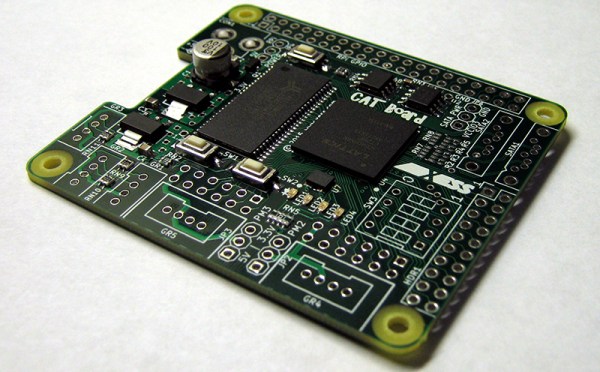Everyone’s seen the Diet Coke and Mentos “experiment” that ends in a brown eruption. But have you seen the Coke and Propane experiment insanity that results in a rocket launch? As [Itay] pointed out when he sent us the tip, this doesn’t need to be lit. The simple act of turning the bottle upside down starts a powerful reaction without any ignition.
 Of course it’s the how of this that tickles our brains, but let’s finish the setup. This starts with a bottle of Coke which is about 3/4 full. The head space is displaced by spraying propane into the bottle; propane is heavier than air. All that’s left is to turn the bottle upside down and pray it doesn’t smack anyone in the noggin as it takes off.
Of course it’s the how of this that tickles our brains, but let’s finish the setup. This starts with a bottle of Coke which is about 3/4 full. The head space is displaced by spraying propane into the bottle; propane is heavier than air. All that’s left is to turn the bottle upside down and pray it doesn’t smack anyone in the noggin as it takes off.
In trying to find an explanation for this phenomenon we came across a plausible answer on the Chemistry StackExchange. It points to the Mentos phenomenon combined with the temperature differential caused by the very cold propane. The answering user theorizes that tiny ice crystals form and when the bottle is turned upside down the cold propane and micro crystals rise through the warmer soda acting as a much more rapid catalyst than Mentos alone. Of course this is just a theory so please share your own ideas below.
We thought the folks who microwave stuff outside of a microwave enclosure had their fill of danger but this videos is also one of theirs. It should be no surprise that they also tried the experiment with an ignition source. That video is found after the break and should immediately convince you to never try any of this yourself.
Continue reading “Coke-Propane Rocket Blasts Off Without Ignition”





 ons of C++ were compiled with CFront, a compiler that generated C code which was then compiled as normal. Around the 1990s, it’s unclear when, numerous native compilers became available, notably for PCs, which lead to explosive growth from 400,000 users to an estimated 4.4 million today.
ons of C++ were compiled with CFront, a compiler that generated C code which was then compiled as normal. Around the 1990s, it’s unclear when, numerous native compilers became available, notably for PCs, which lead to explosive growth from 400,000 users to an estimated 4.4 million today.
 Behind the clock is an Arduino driving a MAX7219 LED controller. Using the MAX7219 was a challenge because it expects a grid of LEDs while the clock needs a linear array. [Dylan] used a line of individual LEDs wired to match what the controller wanted. A rotary encoder tells the processor the position of the arm so the Arduino sketch can determine which LEDs should be lit to show the time and clock face.
Behind the clock is an Arduino driving a MAX7219 LED controller. Using the MAX7219 was a challenge because it expects a grid of LEDs while the clock needs a linear array. [Dylan] used a line of individual LEDs wired to match what the controller wanted. A rotary encoder tells the processor the position of the arm so the Arduino sketch can determine which LEDs should be lit to show the time and clock face.
 Most spy movies (at least the ones worth their salt) will include a few scenes that depict nerds in a van listening in on conversations remotely and causing the victims phones to do things like turn themselves or their cameras on. We have been made to believe that it takes an entire van of equipment and one or two MIT level hackers to pull this off. Turns out all it takes is about $2300, some know how, and an unsuspecting target with a set of microphone-equipped headphones attached to their phone.
Most spy movies (at least the ones worth their salt) will include a few scenes that depict nerds in a van listening in on conversations remotely and causing the victims phones to do things like turn themselves or their cameras on. We have been made to believe that it takes an entire van of equipment and one or two MIT level hackers to pull this off. Turns out all it takes is about $2300, some know how, and an unsuspecting target with a set of microphone-equipped headphones attached to their phone.










